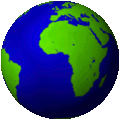Home
Focus Areas
About Us
The summer solstice is upon us, which means it's time to take a long, hard look at the sky.
Here's what you need to know: The sun was at its farthest from the Earth at the exact summer solstice, at 1:51pm local time, according to the staff at the Jack C.
Davis Observatory in Carson City, Nevada.
That means the sun was directly above the clouds, directly in front of the Earth, the Reno Gazette-Journal reports.
At the same time, the sun was directly above the horizon, meaning the horizon was directly in front of the sun.
The solstice is also known as the summer sun's "double rainbow," because it occurs when the sun is directly above the horizon but below the horizon at the same time, the Washington Post reports.
At the same time, the sun was at its farthest from the Earth, according to the staff at the Jack C.
Davis Observatory.
The summer solstice is also known as the Tropic of Cancer.
The director of the observatory, who inspired the creation of the Tropic of Cancer in 2003, and volunteers from the Western Nevada Astronomical Society were on hand to answer questions about the sun telescope viewing and showcase the observatory.
Selected Grant News Headlines
A customized collection of grant news from foundations and the federal government from around the Web.
The Weeknd was awarded the Key to the City and honoured with The Weeknd Weekend by the City of Toronto.The ceremony was attended by Toronto Mayor Olivia Chow, youth from the Boys & Girls Club of West...more
The initiative saw ZTE donate essential supplies and digital connectivity solutions worth 1 million THB to a Public charity organization, Baan Nokkamin Foundation.This foundation provides foster...more
13-year-old Ricky was diagnosed with leukemia for the second time in his young life.Traditional medications were failing, and Ricky's doctor dismissed the recently approved stem cell treatments...more
Notably, this was the first Children's Entrepreneur Market event held in the country.HATCH Fest honored Juneteenth with three public readings of the Emancipation Proclamation by local community...more
Sit Still Kids Salon Opens in Atlanta's Peachtree Battle neighborhood.Salons specifically designed for children are evolving to provide tailored services for kids with diverse needs.Businesses are...more
Debit cards issued by NYC's summer youth job program tied to $17 M ATM fraud scam: sources.The scam led to ATMS across the Big Apple being banged for big bucks from July 11-13.The cash ended up in...more
The passing of my father was a transformative moment for me.This perspective shift is why I now dedicate much of my energy to youth programs and community development.I've leaned heavily on...more
Dobbs announced the need for volunteers at the Central Arkansas Veterans Healthcare System for Compassionate Contact Corps.Volunteers are matched with veterans that are experiencing loneliness or are...more
Jefferson Parish Young Marines receive national honors.Sgt.Taylor Science and Technology Academy, was named the Honor Graduate for the Young Marines 2025 National Leadership Academy-Senior Leadership...more
Monterey County Workforce Development Board Green Cadre program receives $2M state grant.Program will provide up to 90 young adults, between the ages of 18 and 30, with paid job training, work...more
Youth News from...
Community Foundation of Abilene
New York Community Trust
Coastal Community Foundation
San Diego Foundation
Community Foundation of Sarasota County
Manatee Community Foundation
Bloomberg Philanthropies
Delaware Community Foundation
Kern Community Foundation
Key Biscayne Community Foundation
Social Entrepreneurship
Spotlight
When it Comes to Social Enterprises, Failure is the Best Platform for Innovation

In the world of social enterprises, failure is a cringe-worthy moment nobody wants to talk about. But, social entrepreneurs can benefit from their failures.










